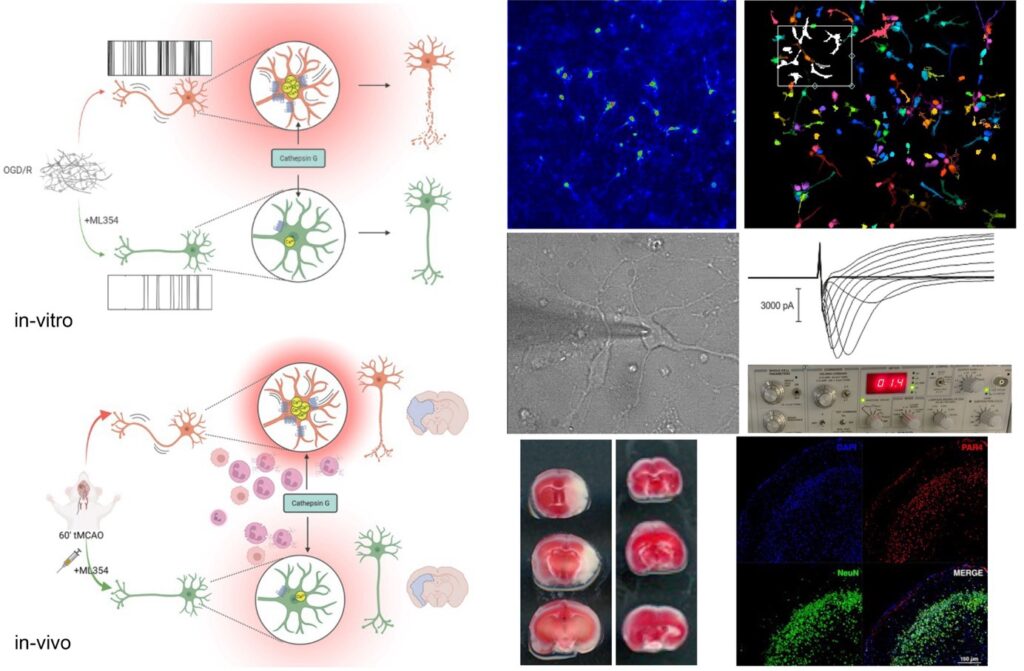
Exploring PAR4, Stroke, and the Brain-Heart Connection
Our collaboration with the Institute of Pharmacology focuses on understanding the complex role of Proteinase-Activated Receptor 4 (PAR4) in neurons and thrombocytes. We investigate how PAR4 modulation affects stroke and myocardial infarction, as well as its impact on post-stroke inflammatory environments. Additionally, we explore the relationship between stroke and myocardial infarction to better understand the brain-heart connection. Through our interdisciplinary approach, we aim to uncover new mechanisms and potential therapeutic targets for both stroke and cardiovascular diseases.
Key interest Areas
1. PAR4 in Neuronal and Platelet Functions
We investigate the dual role of PAR4, a G-protein coupled receptor, in neuronal and platelet functions. Our research explores:
- PAR4’s involvement in synaptic transmission and sensory perception in neurons
- Its crucial role in thrombin signalling and platelet activation
- The shared signalling pathways between platelets and neurons, with a focus on the PAR family
2. PAR4 in Stroke and Neuroinflammation
In collaboration with Prof. Fender of the Pharmacological Institute at University Essen, we explore:
- The role of PAR4 in platelet activation and neuroinflammation during stroke
- The impact of thrombin-induced inflammation on post-stroke infarct volume
- The potential neuroprotective properties of new small molecule inhibitors initially developed as anti-thrombotic treatments
3. Brain-Heart Connection in Stroke and Myocardial Infarction
Our team investigates the bidirectional relationship between the brain and heart in the context of stroke and myocardial infarction:
- The impact of stroke on heart function and inflammatory states
- The consequences of myocardial infarction on the brain, including cognitive impairment and mood disorders
- Potential mechanisms underlying these conditions, with a focus on identifying targets for intervention
Methodologies
Our research employs a wide range of techniques, including:
- Stroke and myocardial infarction animal models
- Behavioral tests
- Calcium imaging
- Electrophysiology (in vivo and in vitro patch-clamping)
- Neuronal stem cell differentiation



Valeria Pesara, MSc

Kai Klima

Jacklyn Baldauf

Diana Otternsandt
